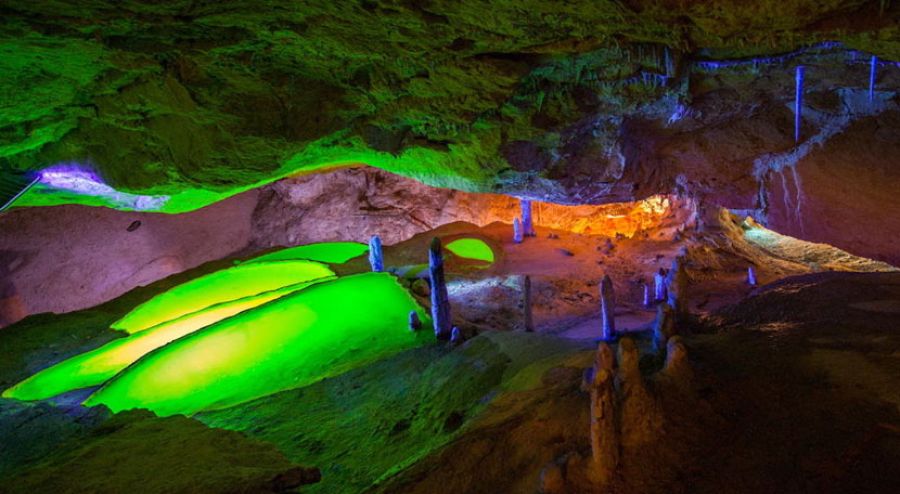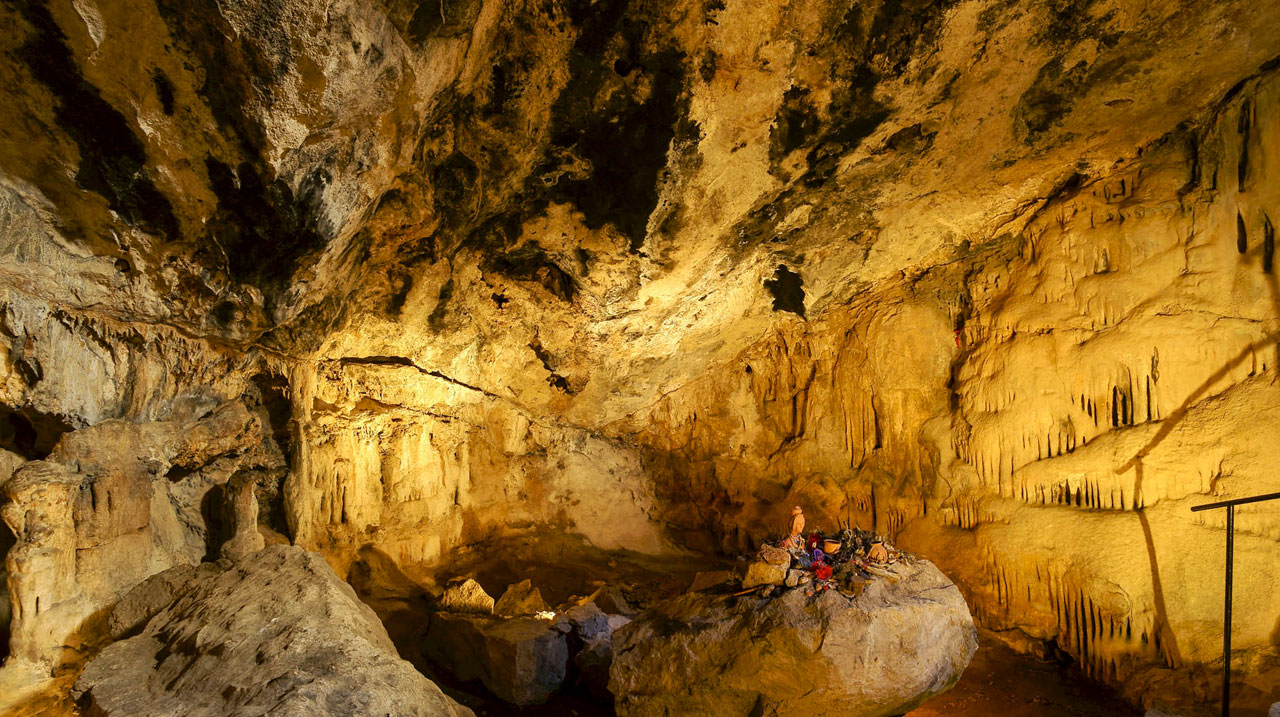
Caves
A short distance from the town of Can Coves we can find the cave of Can Marçà and the Punic Sanctuary of Es Culleram.
Can Marçà Cave
Can Marçà cave is located in the north of the island in Port de Sant Miquel, 20 km from Eivissa, 25 km from Sant Antoni and 23 km from Santa Eularia. The cave is located in a natural environment with incomparable views of the bay, with the Murada and Ferradura islands in front of it. The Cova de Can Marçà is one of the main tourist attractions of Ibiza, being without doubt the most important one on the island. The whims of nature have left us with formations, lakes and surroundings that are amazingly beautiful.
The visitor will enjoy a 40 minute tour in a natural setting with water, light and sound effects. It was the smugglers who first used the cave to deposit their goods. Today you can still make out the black and red marks that marked the entrance and exit of the cave.
The cave has been open to the public and fully equipped for visits since the early 1980s. One of the greatest attractions of the cave is the sound and light show that accompanies a waterfall that reproduces the one that was once natural.
Source: Can Marçà
Punic Sanctuary of Es Culleram

Archaeologically speaking, Culleram was discovered in 1907 and that same year the Ebusitan Archaeological Society organised a major excavation campaign here, which led to the discovery of numerous terracotta figures (some 600 complete ones and over a thousand heads of others), as well as other materials, such as a lion made of bone or ivory. But one of the most important objects, a plate with a double Punic inscription, was found by chance in 1917 and is now in the Provincial Archaeological Museum of Alicante. On the oldest side it reads as follows: To the lord, to Resef-Melkart, this sanctuary that 's'dr, son of Ya'as ay, son of brgd , son of Eshmunhilles, has dedicated. And, on the more modern side: He has dedicated and repaired this wall of carved stone Abdeshmun, son of Azarbaal, the priest, for Our Lady, for Tanit the Mighty and for Gad, on his own.
Until 1981, this very important site was the object of various types of archaeological intervention, including, unfortunately, some clandestine ones. It is currently owned by the Consell Insular de Eivissa y Formentera. A whole system of collapsed stone blocks from the first natural room, whose fall threatened to definitively sink the monument, was consolidated by the owning institution.
Apart from a prehistoric period - when the cave must have been the home of a group of Bronze Age settlers and which does not seem to have continued until the Phoenician-Punic period - from the 5th century BC onwards, the cave became a sanctuary. First dedicated to Reseph-Melkart and then, in the 3rd or 2nd century, to Tanit.
At the same time as the worship at the temple of Culleram, the entire canal of Sa Cala was heavily populated, and it is clear that these people were the most directly involved in its worship. Despite this, it must have been an international sanctuary, well connected to the sea by the port of sa Cala. At least as an organised temple it was almost abandoned late in the 2nd century BC. It is possible that the natural collapse of the first great hall of the cave was the reason for this end of worship at the Punic sanctuary of es Culleram.
Source: Descubre Ibiza
 English
English  Español
Español 




